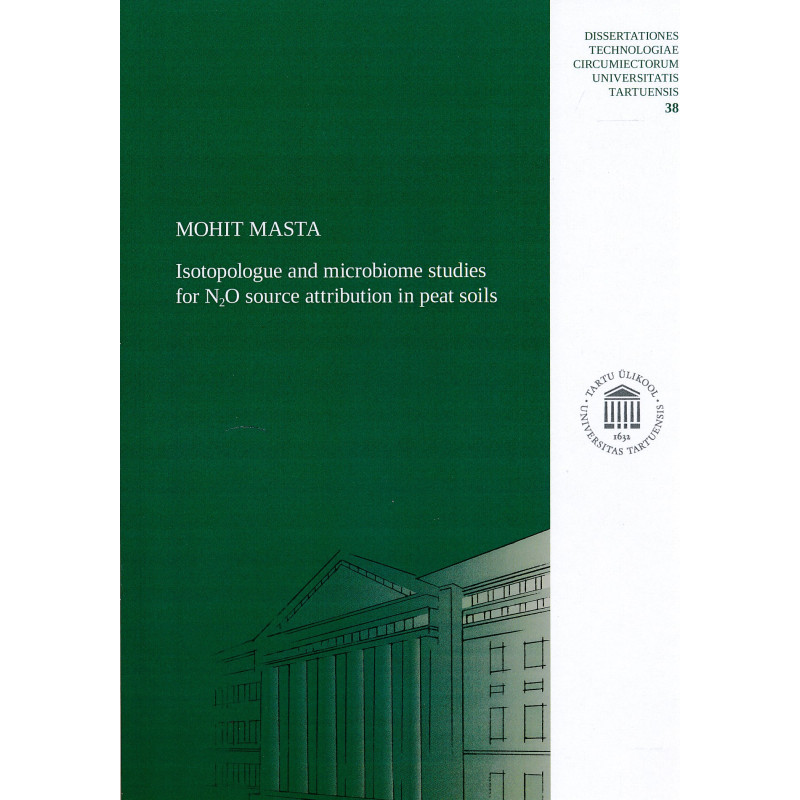



Tartu : University of Tartu Press, 2022
ISBN: 9789916270431
112 pages : illustrated ; 25 cm
Dissertationes technologiae circumiectorum Universitatis Tartuensis ; 38
Softcover new book
Doctoral theses defended at the University of Tartu, summary in Estonian
Nitrous oxide (N2O) is an important ozone depleting greenhouse gas. With the increasing population and food demand, the application of fertilization has also increased. This impacts the nitrogen content in soils and leads to increase in N2O emissions. The production of N2O from soil can be affected by many factors such as soil oxygen, electron availability and microbes. Even though the function of nitrogen cycle has been known for a century, partitioning of N2O fluxes on basis of its production and consumption processes is still difficult and is an important aspect of current research. The thesis aims to understand different factors responsible for N2O production and consumption and partition N2O fluxes to individual source processes responsible under different environmental conditions in peat soil. The thesis shows that under draining of peatlands can lead to dry or intermediate soil moisture conditions. Under dry conditions, the microbial activity was found to be reduced drastically and hence N2O emissions were found to be close to zero. For intermediate moisture conditions, it was observed that process of nitrification was one of the key source process responsible for N2O emissions. When peatland is flooded or rewetted due to natural or artificial conditions, process of denitrification was found to be the driving source processes for N2O emissions. The parallel use of isotopic and microbiological methods provided fundamentally new information about these processes. The knowledge gained can be applied to climate-friendly planning of agriculture and forestry. The greatest potential is in water level regulation, minimizing greenhouse gas emissions without sacrificing economic income and valuable habitats. The restoration of peatlands can lead to major hot-spots of N2O emissions, which could be triggered by incomplete denitrification or nitrification. Hence, results of this thesis could be important when avoiding N2O emissions. This could be achieved via optimization of water regimes during restoration and help in maintenance.